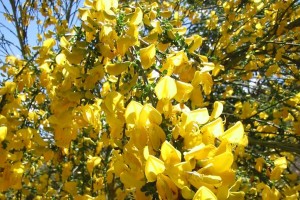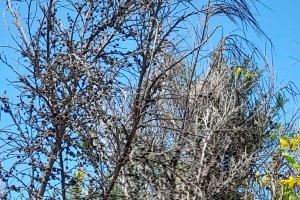Broom gall mite
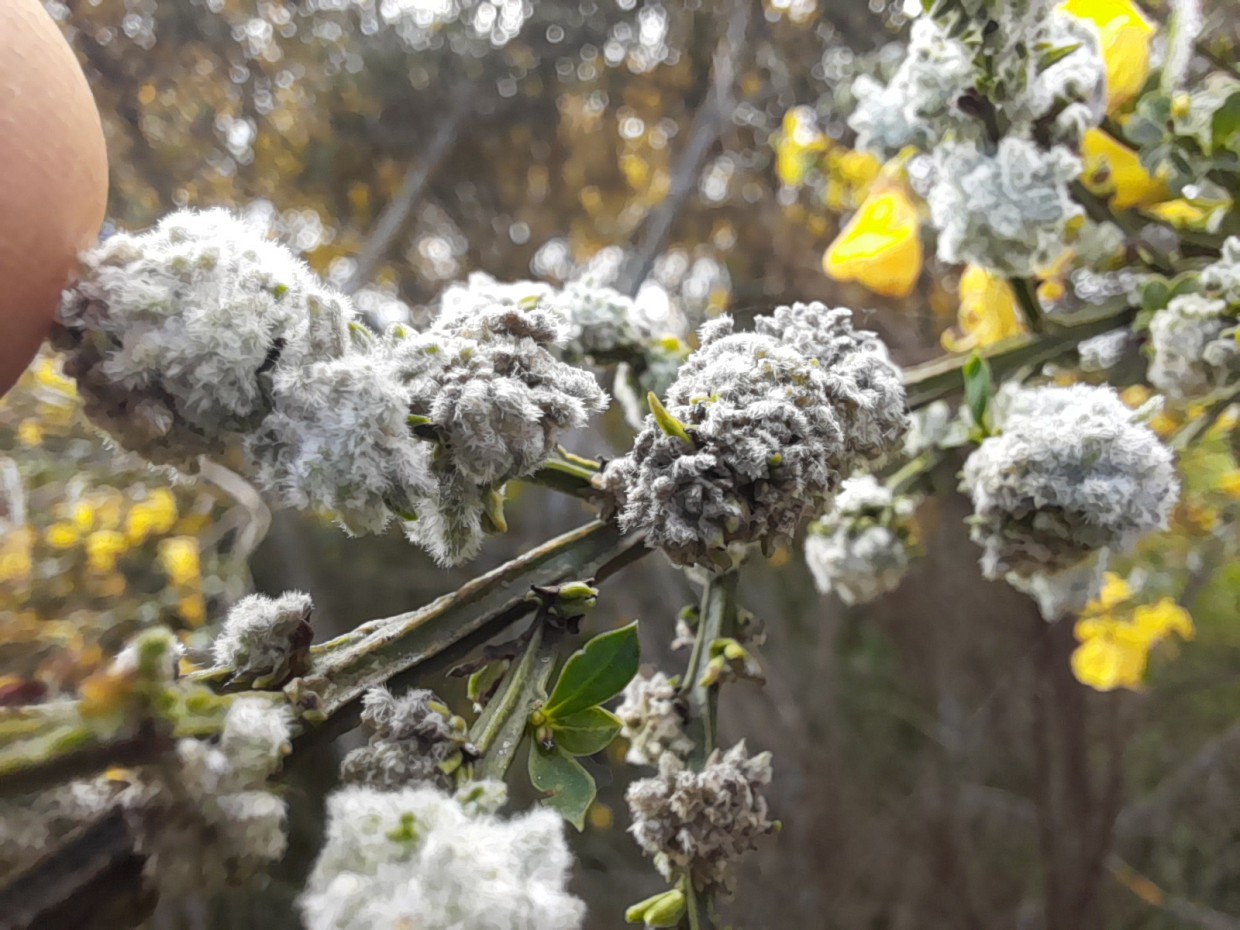
Image: broom gall mite (Aceria genistae) galls.
History in New Zealand
The broom gall mite is native to Western Europe and was first imported in 2006 by Manaaki Whenua - Landcare Research on behalf of the Canterbury Broom Group. The first releases were made in 2008. The mite is now well established and becoming common. A mite of the same name was previously recorded on gorse in New Zealand but has since been shown to be a separate species Aceria davidmansoni. Aceria genistae is specific to broom and is unlikely to interbreed with Aceria davidmansoni. The broom gall mite is also used as a biocontrol agent in the USA.
How would I find/recognise it and what is its lifecycle?
The adult mites are too small to easily see with the naked eye. Under a microscope they look creamy-white to yellow in colour and are cigar-shaped.
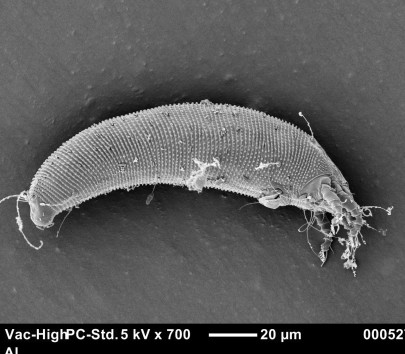
Image: broom gall mite.
The best way to detect the presence of the mites is to look for the distinctive galls, that form as a result of their feeding. Galls may be visible all year round but spring and summer are often the best time to look.
Image: broom gall mite gall.
During winter the mites live in colonies inside the base of stem buds. In the spring, feeding by the mites causes the buds to develop into deformed lumps (galls) that are 5–30 mm across.
Image: deformed broom bud.
Many overlapping generations of mites live and feed in the galls over spring and summer. In late summer and autumn, the galls start to wither and, taking this cue, the mites migrate by crawling or dispersing via the wind to a new stem bud for the winter.
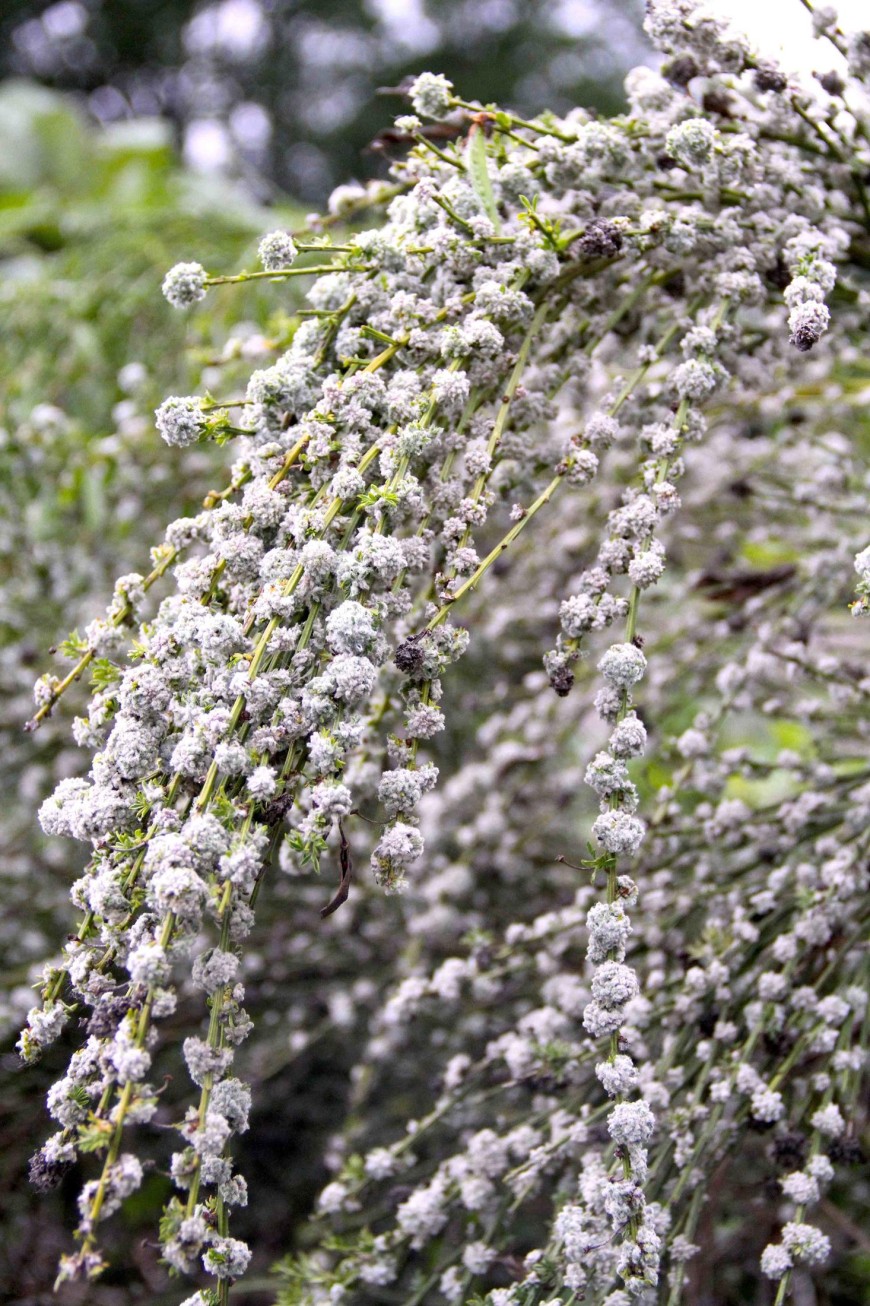
Image: heavily damaged broom from broom gall mite damage.
Occasionally galls form on broom due to other causes which may not be easy to tell apart from those related to the broom gall mite, although they may be less dense. The broom gall mite is easy to differentiate from other broom agents though.
See Broom leaf beetle, Broom seed beetle, Broom psyllid, Broom shoot moth, Broom twig miner.
How does it damage broom?
By forming galls on successive years of growth, the mites cause stunting, reduced flowering, and can even kill whole bushes. Unlike many insects the gall mite happily attacks broom even when it is shaded.
Image: heavily infested broom bush.
Will it attack other plants?
No, it is extremely unlikely that the gall mites will significantly damage anything other than Scotch broom (Cytisus scoparius) and white broom (Cytisus multiflorus). Galls sometimes occur on tree lucerne (Cytisus proliferus) but this is spill-over damage which occurs when the mites are present in large numbers on broom nearby and blow onto these plants and are unable to leave. However, the mites are not able to complete their lifecycle continuously on this suboptimal host so infestations cannot persist. As broom becomes less common over time any spill-over attack should also reduce.
Galls seen on native broom (Carmichaelia spp.) are not caused by the broom gall mite jumping host. They are the result of a native gall mite (Aceria carmichaeliae).
How effective is it?
We have seen major landscape impacts from mite attack and noticed more than 50% of plants killed and in some localised instances this has been as high as 90% of infested plants have died.
How can I get the most out of it?
Although the gall mite can disperse by ballooning on wind currents, dispersal may still be fairly slow if prevailing winds do not deliver the mites to all broom infestations. So it may be worth moving the the mite to other area where they are not yet present and are needed. It is best to collect galls and move them in late spring or early summer when predatory mites are less abundant.
How do I select a release site?
Read Guidelines for selecting release sites for biocontrol agents.
How do I collect it for release at other sites?
Late spring to early summer is the best time to undertake harvesting and redistribution. Aim to shift at least 50 galls to each site and tie them onto plants so the tiny mites can move across.
How do I manage the release sites?
Avoid any activities that will interfere with the mites, such as herbicide application. If you need to undertake control measures avoid the release site.
Key Contact


